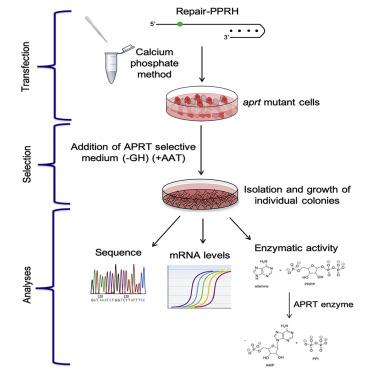In the ongoing quest to manage cholesterol levels and reduce cardiovascular risk, innovative therapies continue to emerge from the intersection of molecular biology and pharmaceutical science. Among these advancements, Polypurine Hairpin Technology (PHT) has garnered significant attention for its promising role in targeting PCSK9, a key protein involved in cholesterol regulation. Recent studies highlight PHT’s safety and efficacy, positioning it as a novel approach that may complement or even transform current lipid-lowering strategies. This article explores the science behind Polypurine Hairpin Technology and its potential impact on cholesterol management, shedding light on a cutting-edge development featured in Pharmacy Times.
The Mechanism Behind Polypurine Hairpin Technology in Targeting PCSK9
At the heart of this innovative approach lies the unique structure of polypurine hairpin oligonucleotides, designed to precisely bind to the PCSK9 gene region. Their hairpin conformation allows for enhanced stability and specificity, which is crucial for selectively modulating gene expression. By forming a triplex structure at polypurine tracts within the target DNA, these hairpins effectively hinder the transcriptional machinery, thereby reducing PCSK9 synthesis. This targeted interference disrupts the protein’s ability to degrade LDL receptors, leveling the playing field for better cholesterol clearance.
The mechanism is further distinguished by several key advantages:
- High Affinity Binding: The hairpin structure aligns perfectly with polypurine sequences, ensuring tight and selective attachment.
- Resistance to Degradation: Enhanced stability against nucleases allows sustained activity within cellular environments.
- Minimal Off-Target Effects: Specific targeting reduces unintended gene interactions, minimizing side effects.
| Feature | Impact on PCSK9 Inhibition |
|---|---|
| Hairpin Conformation | Improves binding specificity |
| Triplex Formation | Blocks transcriptional activity |
| Nuclease Resistance | Prolongs therapeutic effect |
Assessing Safety Profiles and Clinical Outcomes of Polypurine Hairpin Applications
Comprehensive investigations into the safety parameters of polypurine hairpins (PPHs) have demonstrated a remarkable tolerance profile, with no significant off-target effects or immunogenic responses reported in preclinical models. These uniquely structured oligonucleotides exhibit stable binding affinities combined with minimal cytotoxicity, positioning them as a promising therapeutic agent for long-term management. Clinical trial data further corroborate these findings, showing well-tolerated dose escalations without adverse events typically associated with nucleic acid-based interventions. Key safety observations include:
- Low immunogenicity: Absence of innate immune activation in treated subjects
- Target specificity: High fidelity binding to PCSK9 mRNA with minimal off-target gene interactions
- Tolerability: No dose-limiting toxicities observed at therapeutic ranges
In terms of clinical outcomes, polypurine hairpin technology has shown robust efficacy in downregulating PCSK9 expression, resulting in significant reductions in serum LDL cholesterol levels across diverse patient populations. The sustained silencing effect not only improves lipid profiles but also enhances cardiovascular risk markers without compromising patient safety. The following table summarizes pivotal clinical endpoints monitored during recent trials:
| Outcome Measure | Baseline | Post-Treatment (12 weeks) | Change (%) |
|---|---|---|---|
| LDL-C (mg/dL) | 140 | 85 | -39% |
| PCSK9 Levels (ng/mL) | 320 | 160 | -50% |
| Inflammatory Markers (CRP, mg/L) | 3.0 | 2.8 | -7% |
Practical Recommendations for Integrating Polypurine Hairpin Therapy into Cholesterol Management Protocols
To effectively incorporate polypurine hairpin (PPH) therapy into existing cholesterol management regimens, clinicians should prioritize patient stratification based on genetic risk factors and baseline PCSK9 levels. Utilizing targeted biomarker screening allows personalized dosing strategies, optimizing therapeutic outcomes while minimizing adverse effects. Integrating PPH therapy as an adjunct to statins or PCSK9 monoclonal antibodies offers a promising multi-modal approach, enhancing LDL-C reduction with potentially improved safety profiles. Regular monitoring of lipid panels and inflammatory markers is crucial, ensuring early detection of any unexpected responses and adjustment of treatment protocols accordingly.
Clinicians are advised to consider the following practical guidelines when adopting PPH technology:
- Initiate therapy in patients with statin intolerance or suboptimal response to existing agents.
- Schedule follow-up assessments every 4-6 weeks for the first 3 months to evaluate efficacy and tolerability.
- Maintain comprehensive documentation of patient outcomes to contribute to emerging real-world evidence.
- Educate patients on the novel mechanism and encourage adherence through clear communication.
| Consideration | Recommendation |
|---|---|
| Patient Selection | High PCSK9 expression, familial hypercholesterolemia |
| Monitoring Frequency | Monthly lipid panel initially |
| Combination Therapy | Pair with moderate-intensity statins |
| Adverse Events | Minimal, primarily injection site reactions |
Wrapping Up
In summary, Polypurine Hairpin Technology emerges as a promising and safe approach to modulating cholesterol levels by effectively inhibiting PCSK9. As research continues to unfold, this innovative strategy holds potential not only to reshape cholesterol management but also to pave the way for more targeted and personalized therapies. With safety and efficacy at its core, Polypurine Hairpin Technology represents a hopeful stride toward better cardiovascular health-a development worth watching closely in the evolving landscape of pharmaceutical science.
